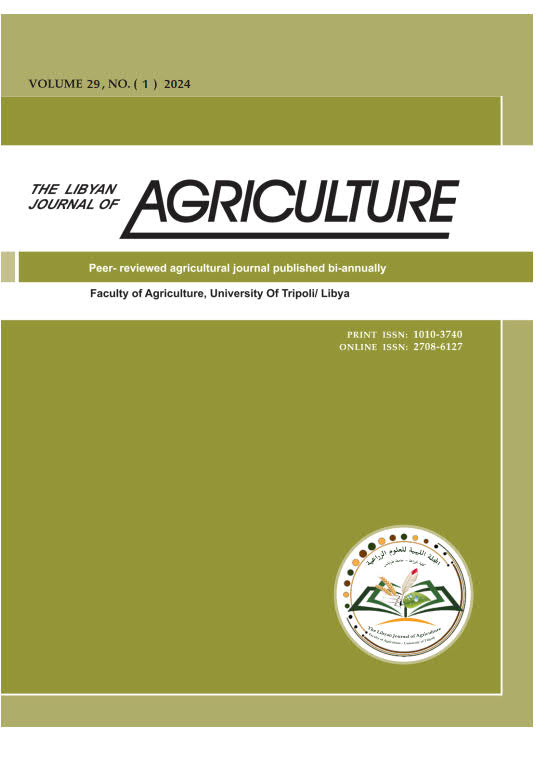Comparison of honeybee queen’s quality from Kufra and Tripoli based on colony performance
Main Article Content
Abstract
The western honeybee subspecies Apis mellifera exhibit variations in morphological and biological traits due to geographic factors and natural barriers that isolate different regions. This study aimed to evaluate the quality of honeybee queens from Kufra (an isolated region) and Tripoli (a non-isolated region) by analyzing colony performance during the spring season. Four colonies from each region were selected, each containing seven brood frames fully covered with bees and headed by a one-year-old queen. Colony performance was assessed using several criteria, including hygienic behavior, varroa mite infestation rates, honey production, and aggressiveness level. The results indicated that colonies from both regions demonstrated high levels of hygienic behavior, low varroa infestation rates, and moderate honey production. However, all colonies exhibited a high level of aggressiveness. No significant differences were found in the biological activities of colonies from the two regions, except for aggressiveness. Worker bees from Tripoli displayed more aggressive behavior, pursuing longer distances (P = 0.018) and for extended durations (P = 0.032) compared to those from Kufra. This study also recorded the presence of varroa mite infestations in colonies from Kufra and highlighted the strong similarity between colonies from both regions in all biological activities, except for their level of aggressiveness.

